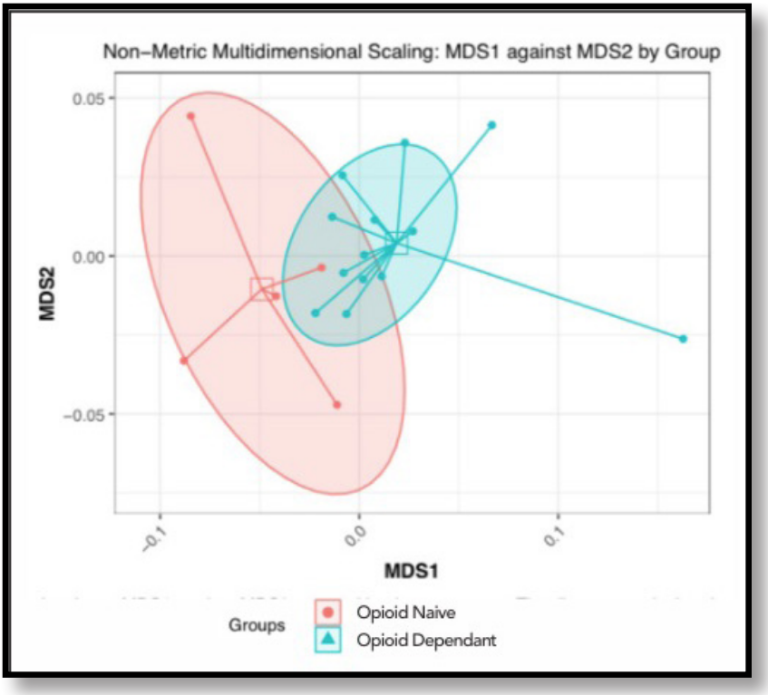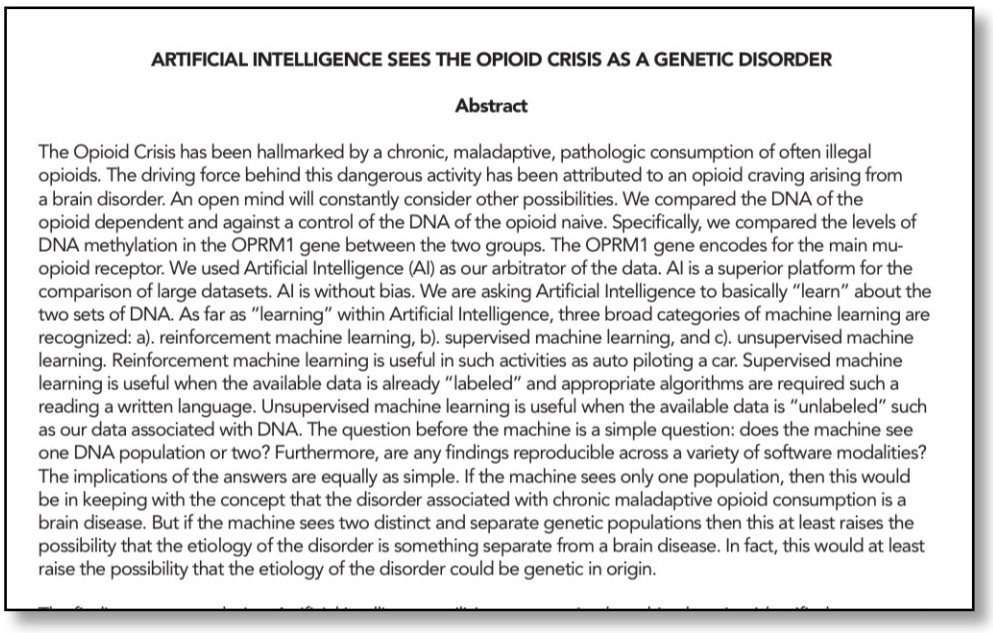We know that we have kicked the hornets nest. We know that the mental health and addiction communities will continue to deny the science. So we did something that made sense to us. We took our DNA data from both the Opioid Dependent and the Opioid Naive populations and fed the data into artificial intelligence. And we asked artificial intelligence one simple question: do you, artificial intelligence, see one genetic patient population or two genetic patient populations? If AI sees one genetic population, this would give credence to the mental health component as an etiology for the symptoms. But if AI sees two separate genetic populations, then this is scientific evidence in support of the genetic etiology for the symptoms. In other words, AI sees the opioid dependent as a separate and distinct genetic population and, due to the damage, the Methylation to the DNA, which results from repetitive opioid exposure.
Our Science that Artificial Intelligence Can See the Opioid Issue as a Genetic Illness

We first used a program called Principal Component Analysis (PCA). And as can be seen from this image, PCA clearly sees two distinct and separate genetic populations. This is evidence against a mental health component to the disease process and evidence that the underlying pathology is a genetic disorder.
We next sent the data to a software program within AI known as Non-metric Multidimensional Scaling (NMDS). And again, as can be seen in the graphic, AI sees two distinct and separate genetic populations.
Our Science that Artificial Intelligence Can See the Opioid Issue as a Genetic Illness

There is more to this, if you would like to learn more, here is a brief article that we have written:
Our Science that Artificial Intelligence Can See the Opioid Issue as a Genetic Illness

But for those who wish to continue to deny the science, let’s be clear. You are not arguing with us. You are arguing with artificial intelligence.